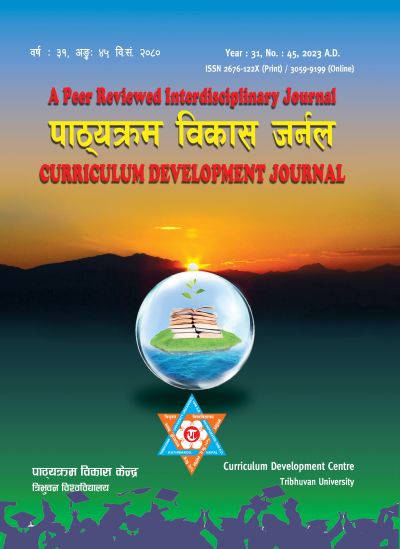Writing and Publishing a Scientific Research Paper
DOI:
https://doi.org/10.3126/cdj.v31i45.68986Keywords:
Impact factor, peer-reviewed journals, publication process, research findings, research findings, scientific papersAbstract
Research findings are pivotal drivers in societal advancement, catalyzing the generation of novel knowledge and fostering innovation. To ensure wider dissemination and effective communication, it is essential to publish research articles in peer-reviewed and indexed journals. Moreover, publishing papers in high-impact factor journals has become an essential academic and professional obligation in many countries worldwide. A good research report should fill a knowledge gap, providing new and valuable insights, quantifiable data, and measurable outcomes. The shape and structure of a scientific paper depend heavily on the research question and the data assembled for publication. However, even if a paper contains innovative and outstanding content, it may face rejection if its structure and organization are not meticulously crafted. Furthermore, the increased volume of submissions to highimpact journals can also pose a significant challenge to getting papers published. To enhance the likelihood of successful publication, researchers should prioritize meticulous planning and rigorous implementation of their research methodology. Equally important is the careful structuring of the paper, encompassing critical elements of different parts of article. This article serves as a valuable resource, particularly for individuals who are in the early stages of their academic and research journey. Thus, to communicate their research findings and innovations effectively to a target and informed audience, researchers and academics must possess fundamental insights into the publication process. Adhering to the guidelines outlined in this paper enhances researchers’ ability to meticulously structure their papers, thereby increasing the likelihood of successful publication and facilitating meaningful contributions to the broader scientific community. It not only bolsters researchers’ prospects but also serves to strengthen the integrity and impact of their work within the scientific community. Additionally, it offers a brief overview of the submission and review processes involved in publishing in peer-reviewed journals. Finally, this paper provides invaluable insights aimed at enhancing the quality and increasing the likelihood of acceptance of scientific papers.
Downloads
Downloads
Published
How to Cite
Issue
Section
License
© Curriculum Development Centre, Tribhuvan University

